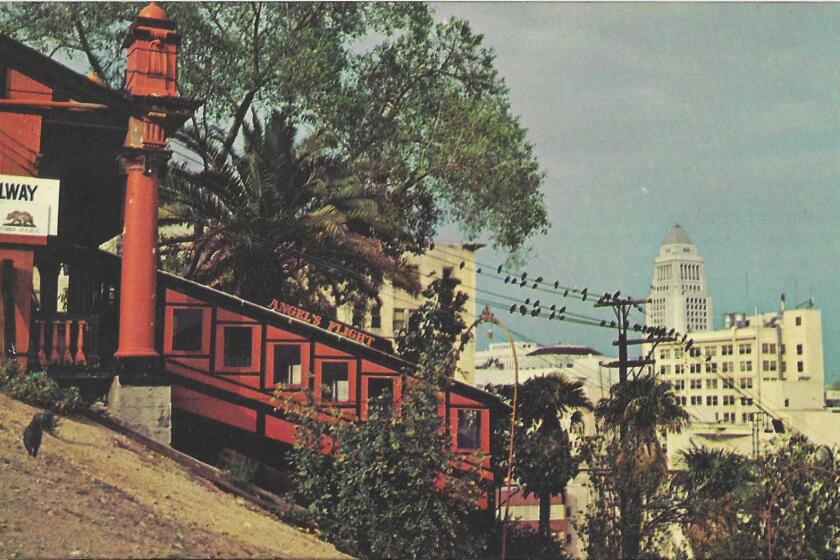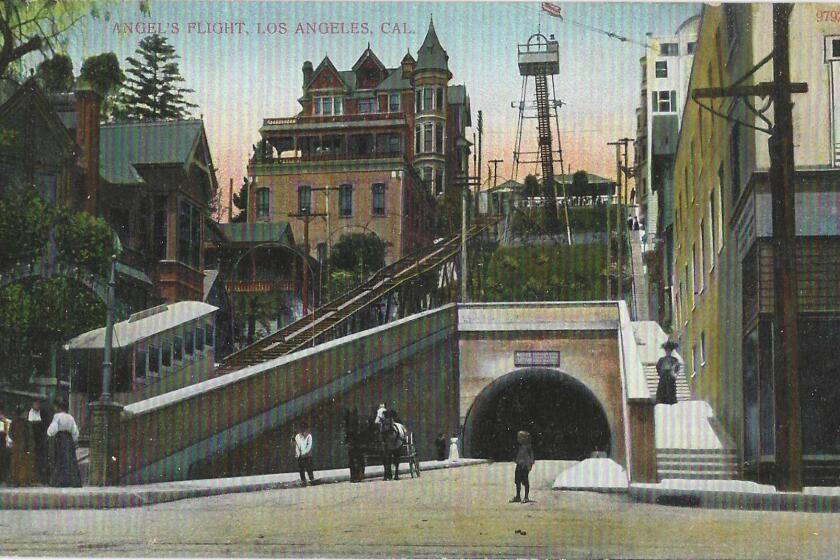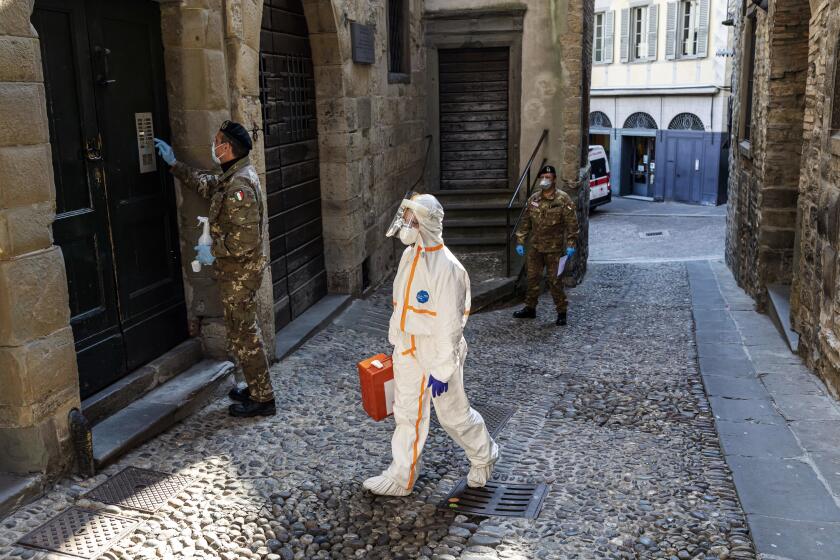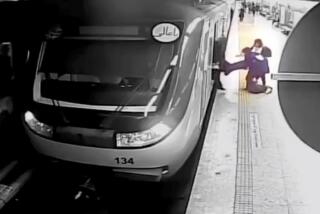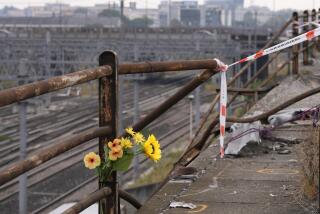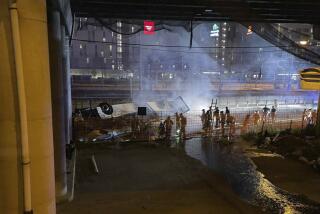Italy probes why cable car brake failed in crash, killing all but a 5-year-old boy
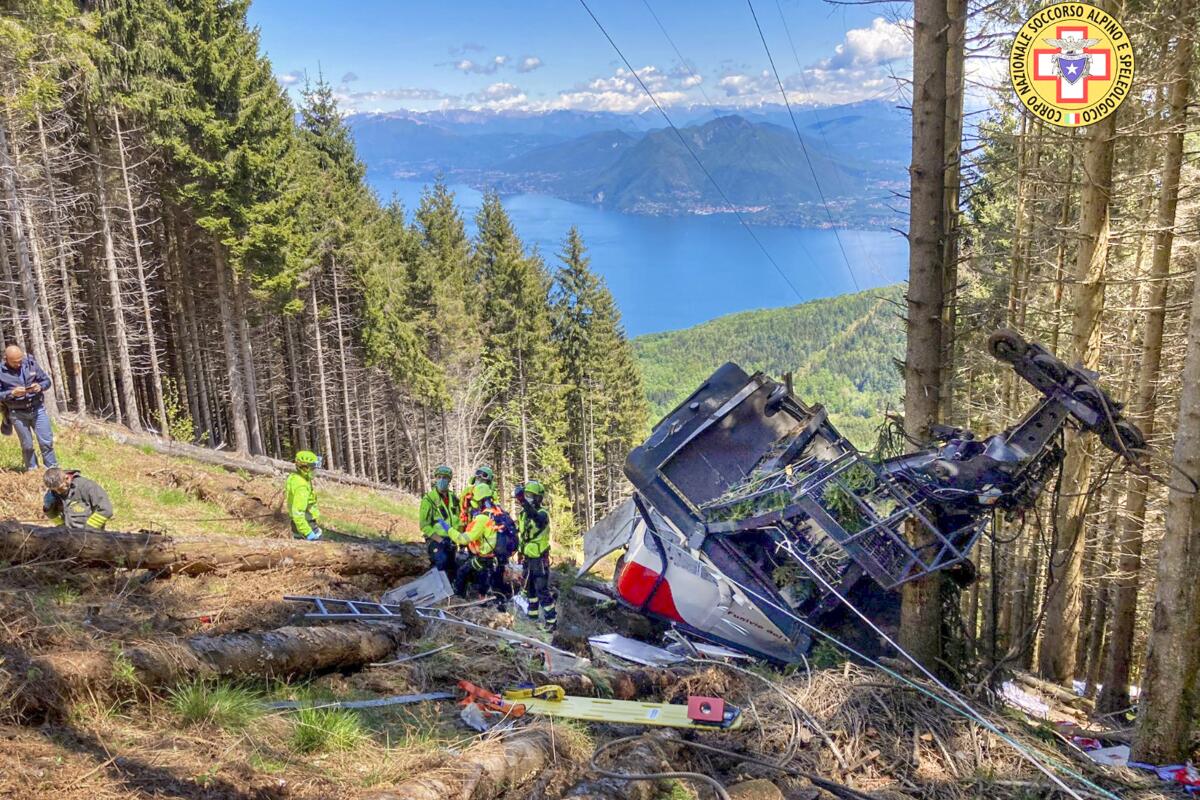
- Share via
STRESA, Italy — The investigation into the Italian cable car disaster that killed 14 people will focus on why the lead cable snapped and why the emergency brake didn’t engage, the lead prosecutor said Monday. In Sunday’s crash, the car careered back down the mountain until it pulled off the support line and crashed to the ground.
Prosecutor Olimpia Bossi of the Verbania area said her investigation would focus on one grim determining factor: “The brakes of the security system didn’t work. Otherwise, the cabin would have stopped,” she said. “Why that happened is naturally under investigation.”
Bossi spoke to reporters as the lone survivor of Sunday’s horrific tragedy, a 5-year-old Israeli boy living in Italy, remained hospitalized in Turin in intensive care with multiple broken bones.
The Israeli foreign ministry identified him as Eitan Biran. His parents, younger brother and two great-grandparents were among the dead, the ministry said, correcting an earlier statement that had included Eitan among the victims.
Italian media identified all the other victims as residents of Italy.
The disaster, in one of the most picturesque spots in northern Italy — the Mottarone mountaintop overlooking Lake Maggiore and other lakes near Switzerland — raised questions about the quality and safety of Italy’s transport infrastructure.
A historic cable car ascending the block-long Angels Flight railway suddenly plummeted down its steep track Thursday in downtown Los Angeles, slamming into a second cable car and killing an 83-year-old New Jersey man.
Transport Minister Enrico Giovannini announced that a commission of inquiry had been formed to investigate the “technical and organizational causes” of the accident, while prosecutors will focus on any criminal blame. Giovannini told reporters in Stresa, the lakefront town at the foot of the Mottarone peak, that the aim of the investigative commission would be to “ensure this never happens again.”
The transport ministry said a preliminary check of the cable line’s safety and maintenance record showed that the whole lift structure underwent a renovation in August 2016, and that a maintenance check was performed in 2017.
Late last year, inspections were performed on the cables themselves, including magnetic inspections on the primary cables of the lift: the cable that pulls the cabin up the mountain, the support cable that holds the car, and the rescue cables. In December, another visual check was performed, the ministry said.
The mayor of Stresa, Marcella Severino, quoted witnesses as saying they heard a “loud hiss,” apparently when the lead cable snapped. She said the cabin reeled back down the line until it apparently hit a pylon and then plummeted to the ground. It rolled over two or three times before crashing into trees, she said.
Everybody knows Angels Flight. But what about Court Flight? Or the Mt. Washington Railway? Or the Catalina Island funicular? Here’s the story of the cars that climbed Southern California’s hills and the automobiles and other calamities that all but made them extinct.
Some of the bodies were thrown from the car and were found amid the trees, she said.
Prosecutor Bossi noted that the emergency brake had engaged on the cable car traveling in the opposite direction, down the mountain.
She said the possible crimes being investigated were multiple manslaughter, attempted manslaughter and an “attack on public transport.” She acknowledged that the last crime was an unusual hypothesis but that it was justified because the cable car was a form of public transportation.
The funicular line is popular with tourists and locals alike to scale Mottarone, which reaches a height of 4,900 feet and overlooks several picturesque lakes and the surrounding Alps of Italy’s Piedmont region.
Lawsuit: Council OKs its portion of a proposed $3-million settlement with the family of a Holocaust survivor killed in the funicular crash.
The mountain hosts a small amusement park, Alpyland, which has a children’s roller coaster, and the area also has mountain bike paths and hiking trails.
It reopened only a few weeks ago after Italy’s wintertime coronavirus lockdowns lifted, and officials hypothesized that families were taking advantage of a sunny Sunday to visit the peak and take in the view.
The mayor declared a day of mourning for Stresa, which like tourist destinations around the country had been affected by lockdowns that not only slashed foreign tourism but also cut local day-trip visits by Italians.
Giovannini acknowledged that the local community was “at a moment of rebirth” with the tourist season just beginning. “It has been particularly struck by this event and has already shown a great sense of responsibility” in sharing in the pain of the families, he said.
Start your day right
Sign up for Essential California for the L.A. Times biggest news, features and recommendations in your inbox six days a week.
You may occasionally receive promotional content from the Los Angeles Times.
The Israeli foreign ministry identified the five Israelis killed as Eitan’s parents, Amit Biran and Tal Peleg-Biran, an Israeli-born couple studying and working in Pavia. Biran’s Facebook page identifies him as a medical student at the University of Pavia.
Their 2-year-old son, Tom, was killed at the scene, as were Peleg-Biran’s grandparents, Barbara and Yitzhak Cohen. The ministry said they had arrived in Italy on Wednesday to visit their granddaughter and great-grandchildren.
Amit Biran’s sister, Aya, was not involved in the crash and was at the bedside of Eitan at Turin’s Regina Margherita hospital, the foreign ministry said, adding that other family members were flying to Italy from Israel to join her.
In a tweet Tuesday, Italy’s national firefighting squad said it was pulling for Eitan while also mourning the others: “Forza Eitan [Go, Eitan], all the firefighters are with you.”
The head of intensive care at the Turin hospital, Dr. Giorgio Ivani, said Eitan was sedated and intubated after surgery to repair his broken bones. An MRI scan was planned to check for any brain injury, although hospital officials noted that he was conscious when he arrived.
Air quality has been terrible for decades in Bergamo, in northern Italy, which last year suffered many COVID-19 deaths. Researchers see a connection.
Among the other victims were an Italian researcher, Serena Consentino, and her Iranian-born companion, Mohammadreza Shahaisavandi, according to a statement from Italy’s National Council of Research, where Consentino had a research grant.
Also killed at the scene were Vittorio Zorloni and his wife, Elisabetta Persanini. Their 6-year-old son, Mattia, died at Regina Margherita after multiple efforts to restart his heart, hospital officials said.
A young couple, Silvia Malnati and Alessandro Merlo, were killed while Malnati’s brother stayed down in town and frantically tried to call her, Italy’s La Stampa newspaper reported, quoting the brother.
Another couple, Roberta Pistolato and Angelo Vito Gasparro, were celebrating the latter’s 45th birthday. La Stampa said Pistolato texted her sister in Puglia right before the tragedy: “We’re going up in the funicular. It’s paradise here.”
More to Read
Sign up for Essential California
The most important California stories and recommendations in your inbox every morning.
You may occasionally receive promotional content from the Los Angeles Times.
